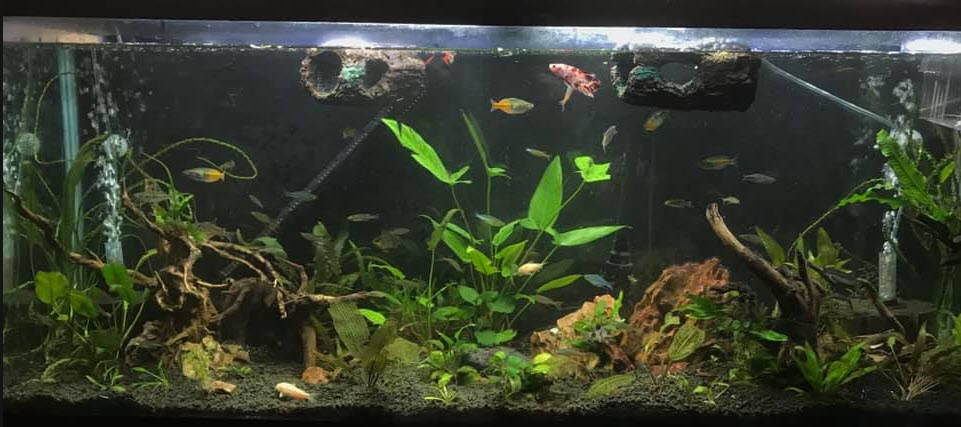
Both beginners and experienced aquarium owners often make a big mistake which stresses fish in their aquarium. They give their new filters a thorough cleaning at the end of cycling. Or they clean their filters thoroughly once a month. And their water then gets very cloudy and they get ammonia spikes.
A thoroughly cleaned aquarium filter is the same as a new aquarium filter, it must be cycled for several weeks. And it normally takes months without cleaning before a clean filter will give crystal clear water. In an aquarium, in general, brown gunk is good, not bad.
.
“Beneficial Bacteria ain’t Pretty!”
.
This is long and boring. Read on only if you are a real nerd like the author. The following discussion is in layers and tends to repeat itself in more and more complexity.
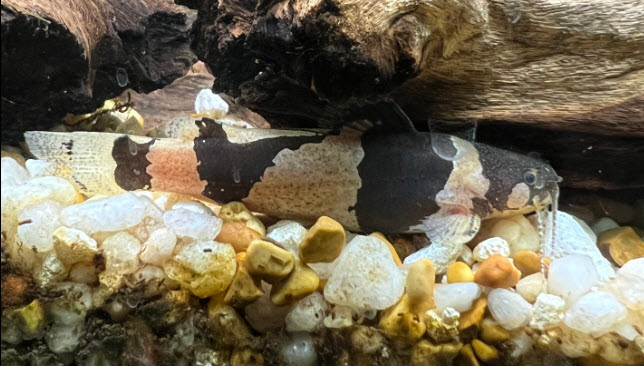
The Problem with Filter Cleaning in More Depth
Many in the hobby clean their filters thoroughly once a month as they think the “brown gunk” is fish feces. Then these same hobbyists come up on social media wondering why their aquarium is always cloudy.
The surprising thing is that when informed of why their aquariums are cloudy, they almost always say they don’t believe it and that they are going to continue to clean their filters as they are just very uncomfortable with brown gunk. Ahh the power of our “cleanliness is next to godliness” upbringing.
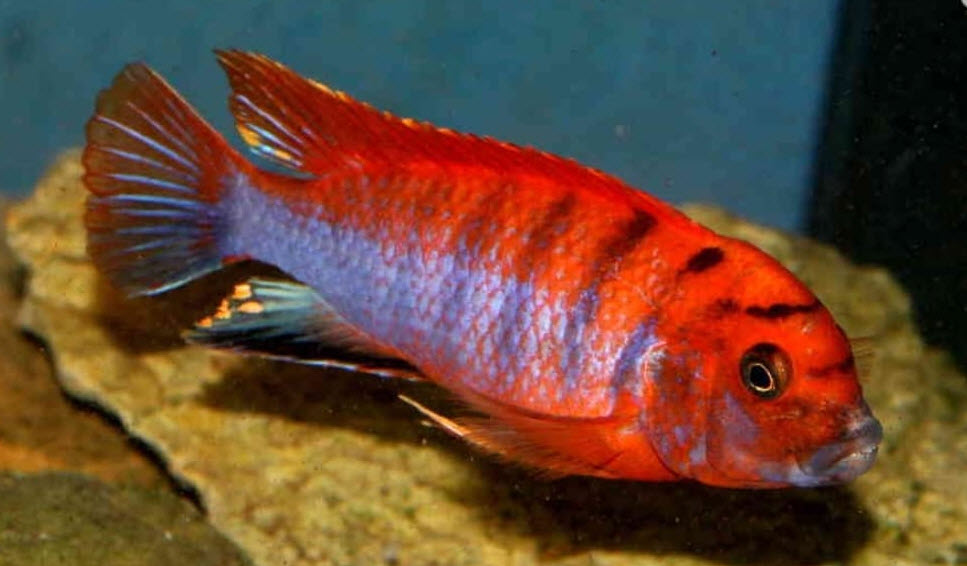
Testing
Multiple replicate scientific experiments were carried out with controls. These studies looked at cleaning sponge filters. They established that:
- Cleaning a newly established (months) sponge filter under RUNNING unchlorinated well water OR RUNNING chlorinated water removed virtually all the beneficial bacteria
- Cleaning a newly established (months) sponge filter by VERY LIGHTLY SWISHING back and forth once or twice in a pail of unchlorinated well water OR chlorinated water left significant amounts of beneficial bacteria in the filter.
- Cleaning a LONG ESTABLISHED (years) sponge filter under running unchlorinated well water OR chlorinated water left significant amounts of beneficial bacteria in the filter.
So you never want to clean a relatively new filter media in running tap water, period. You can get ammonia spikes. And you want to only partially clean the filter media, not thoroughly clean it. Thorough cleaning can give ammonia spikes. If the filter has been long established one can clean it often with little effect on filtration capacity.
The testing which resulted in these conclusions is shown in the following link:
6.8.1. Test of Cleaning Filters
.
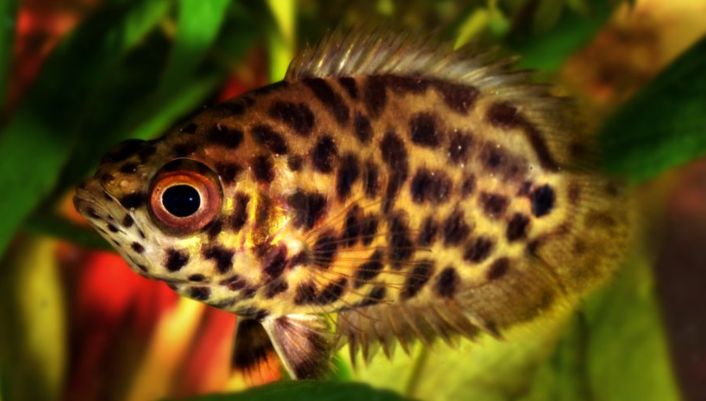
Analysis
The best way to think of this situation is to realize that fish feces and uneaten food MUST be decomposed by a host of what are called “heterotrophic” bacteria (meaning “normal” bacteria that eat carbohydrates and proteins). The decision for the hobbyist is whether they want that bacteria to be present as cloudy water or do they want this bacteria to be present as brown gunk in the filter media. The choice is theirs to make.
Note that there is a myth that the surfaces of the substrate, rocks and the ornaments in an aquarium have significant colonies of beneficial bacteria. Unless one has an under-gravel filter this is a myth.
The substrate, rocks and the ornaments do not have “turbulent”, rapid water flow over them. “Turbulent”, rapid water flow is an absolute requirement for the growth of significant numbers of beneficial bacteria. This obviously would change if one aimed a wavemaker at the substrate to create rapid flow over the substrate.
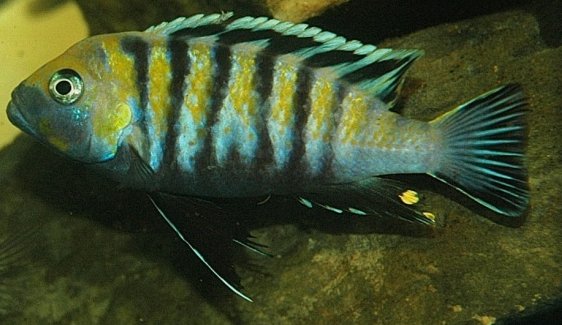
Biofilms and Brown Gunk
From the Poret Foam Supplier (Swiss Tropicals)
“The brown filter sludge in a filter is for the most part alive and not simply waste. Removing this mud does more harm than good. The purpose of the filter media is not to filter out particles from the water as is often assumed. The media serves as the habitat for a vast array of microorganisms that include bacteria, archaea, worms, ciliates, flagellates, and many others. These microorganisms live in a community that is based on biofilms. The biofilms are created by bacteria that secret extracellular polymeric substance (EPS), which is often called “slime”. The community forms a bioreactor that processes the waste and turns it into food and energy for its members, and ultimately into organic or inorganic products that are then used by plants, evaporate, or removed by water changes. It takes a considerable amount of time to establish this “filter community”; consequently, it is very important not to disturb it unless absolutely necessary.”
This is probably the most intelligent statement any supplier of aquarium products has ever made.
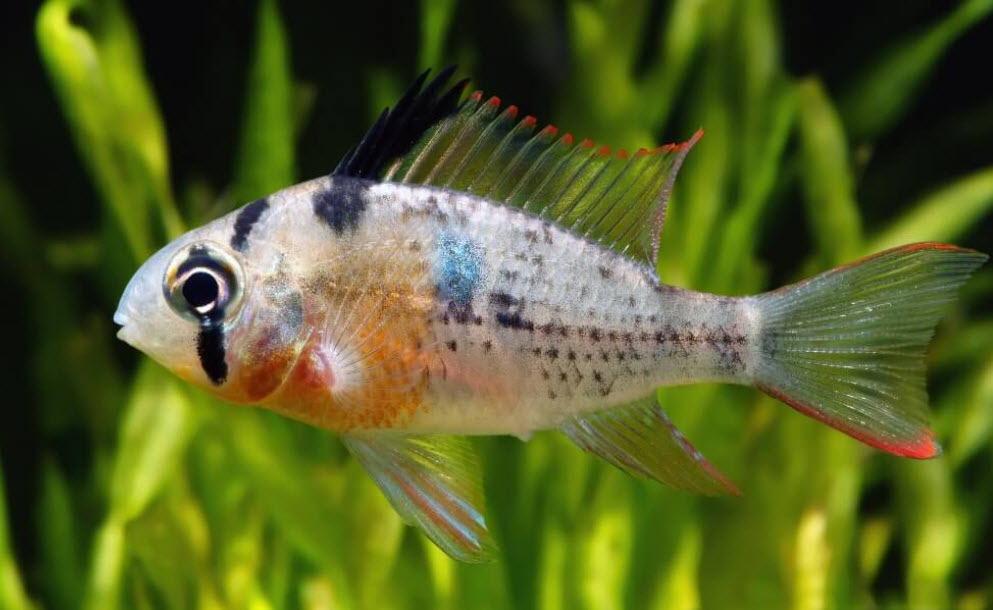
Biofilm is the thin layer that is exposed to the flow of the water and does the biofiltration. What many miss is that this biofilm forms on brown gunk surface just as easily as it forms on the surface of the biomedia. This can be best illustrated with a cross section of a single urethane foam cell roughly 0.030 inches across (30 ppi) in a typical aquarium filter over time:
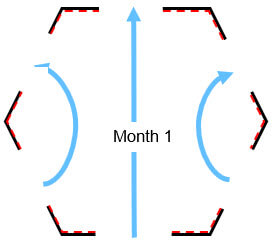
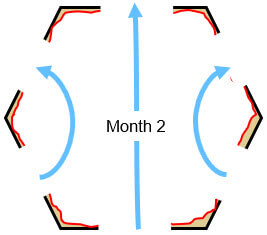
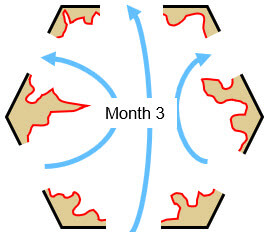
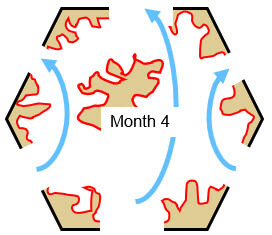
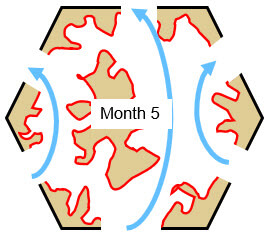
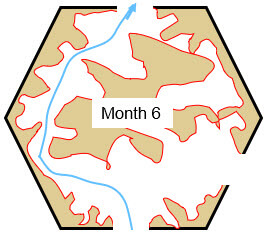

This illustrates how the bioactivity of the beneficial bacteria increases. The red lines (biofilm) are the ONLY areas where there is beneficial bacterial activity. It is not the volume of the brown “gunk” but rather it is the surface area which is important. At 6 months the brown “gunk” gets enough volume to start shutting down the flow and stopping the biofiltration.
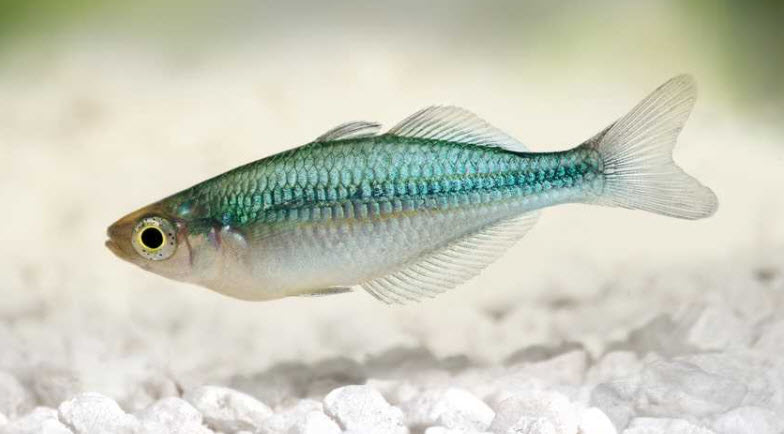
This concept that beneficial bacteria are in the brown gunk in filters is not only proven by the thorough cleaning test above, there is other supporting data:
- Diana Walstad goes into how beneficial bacteria work in her book “The Ecology of the Planted Aquarium”. She talks extensively about how the biofilms build up with a huge number of references.
- When starting an aquarium everyone agrees that the best “seed” is to squeeze a dirty existing sponge filter into some water. The resulting brown soup can give a cycled tank in days. So obviously this is where the beneficial bacteria are.
- K1 fluidized beds work great at keeping water crystal-clear and minimizing ammonia and nitrite readings. They only do that when they have been cycling for two to four months and build up a brown filmy mass inside the K1 media. This brown “gunk” is the reason K1 fluidized beds work so well.
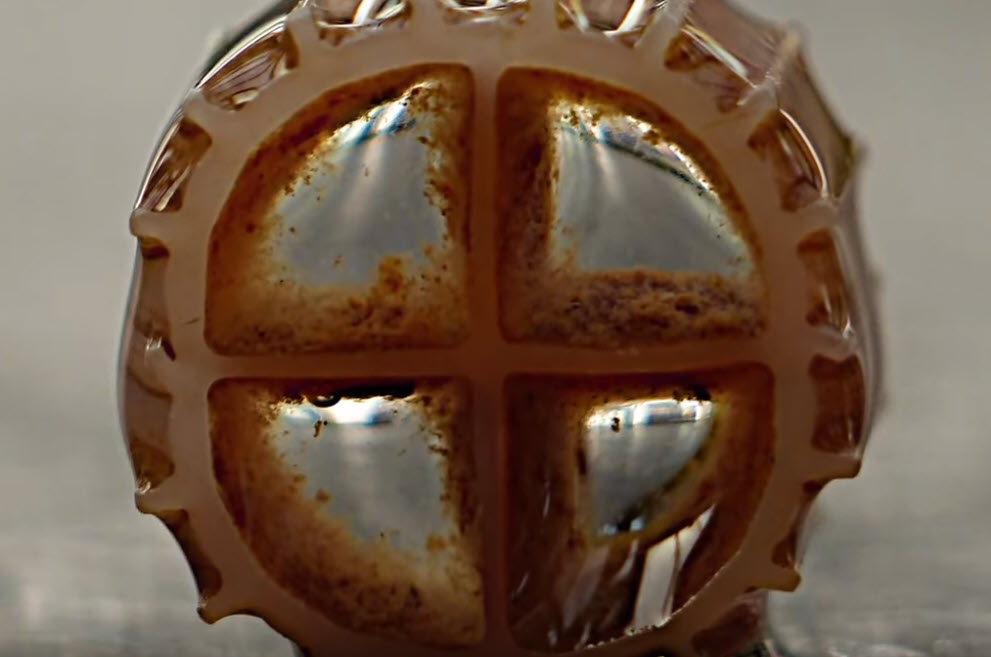
Now there will be many skeptics who will say the brown gunk needs to be kept out of the aquarium and that this test wasn’t correct. I try to avoid anecdotal evidence but two comments to this website stand out:
“I’d like to say your section on filtration is excellent. I’ve kept fish since I was 7 yrs old and for the past 6 yrs have kept and bred African Cichlids. My son has a community tank in his room. When I read your article on “over cleaning filters” something clicked for me. Embarrassing as it is for me to say, I often forget about my sons tank which houses tetras and tiger barbs. When I say forget I mean, I don’t have any hands in it constantly. Without realizing it I was performing my own “test” and the results, I noticed my son’s tank was always crystal clear yet it always had the “dirtiest” filter with TONS of “brown sludge”. His fish were very healthy and NEVER got disease. Long story short, I now do my best to leave my filters alone and the difference is amazing.”
Another very similar comment was:
“This site is a nightmare. Every time I think I will spend a few minutes reading an article, I glance up and realize I’m approaching the end of my hour lunch break and I’ve not eaten anything. I have a 200L aquarium and went through a recent phase of “Why is it dirty? I must clean my filter.” which just made it dirtier. Meanwhile, in my daughters room is a 20L Endler aquarium that is spotless and has crystal clear water which I more or less ignore other than periodic water changes or the occasional test. I’ve had so many moments which I will term “eureka!” moments, where something has just clicked, so thank you very much for all your time and effort in articulating this information. It has been a real eye-opener and I am hopeful will lead to many fish both current and future having a much higher quality of life!”
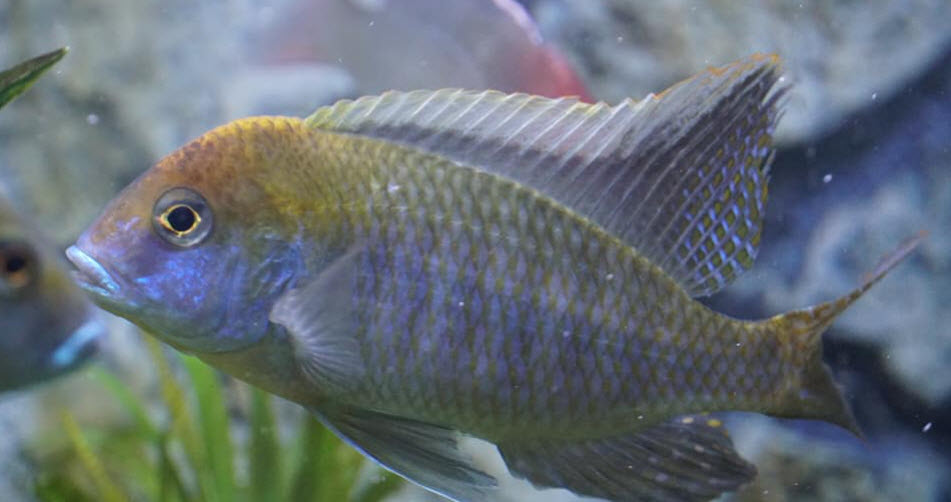
The biggest myth about filtration is that one needs a clean filter in order for the filter to be effective. Exactly the opposite is true. The dirtier the filter media the better the filtration. The brown gunk inside a filter is many different varieties of very beneficial organisms, including so called “beneficial bacteria”. The filter below filtered an aquarium with perfect water parameters and some very healthy fish. It was not a “nitrate factory” nor a spewer of disease pathogens.
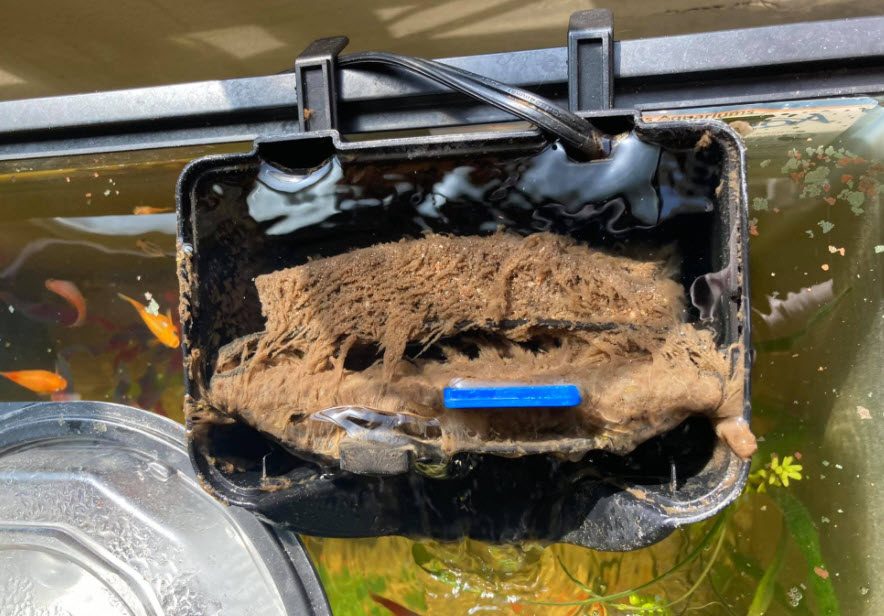
Now the level of this brown gunk will vary depending on the biofiltration amount. I very heavily over filter. I have huge amounts of biofiltration. The K1 media in my fluidized beds has a thin layer of light brown “gunk” on it and that is all. It never gets to the level seen in the K1 above. The foam in my FX6 filters NEVER fills with brown gunk. It is slippery, which indicates a biofilm is present on the foam. But it is not brown. It looks clean even after a year of use. I NEVER clean my filters.
Ben Ochart has one large heavily stocked aquarium which is heavily filtered with both an FX6 and a foam filled sump. His water is crystal clear. He tore down the FX6 after six months. The foam he had in the trays and the foam around the trays appeared to be “clean as a whistle”. In truth, the foam was undoubtedly covered in a clear slime of beneficial bacteria. This is the absolute ideal for any aquarium.
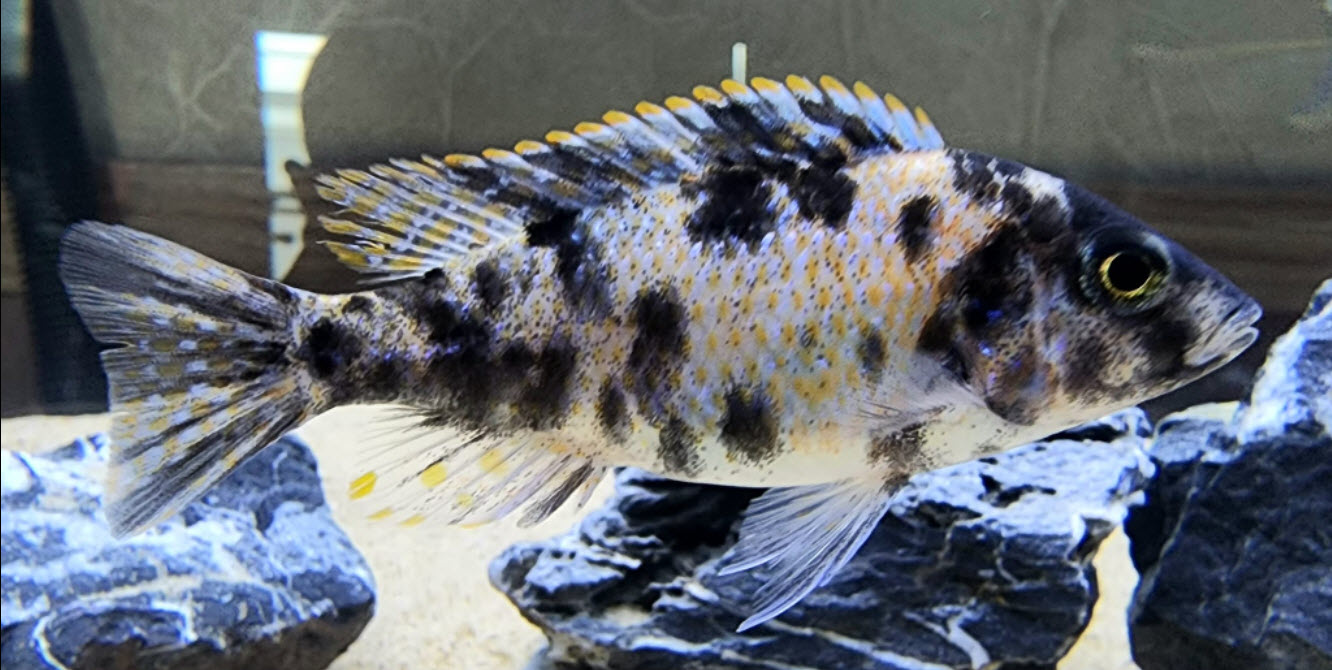
Further Data
The testing which resulted in these conclusions is shown in the following link:
6.8.1. Test of Cleaning Filters
For more information on this complex, little understood topic click on these links:
6.2. Biofiltration
6.2.1 Detritus Explained
6.2.2. Brown Gunk in the Filter
6.2.3. Cloudy Water
.
Return to Filtration Menu
.
Aquarium Science Website
The chapters shown below or on the right side in maroon lead to close to 400 articles on all aspects of keeping a freshwater aquarium. These articles have NO links to profit making sites and are thus unbiased in their recommendations, unlike all the for-profit sites you will find with Google. Bookmark and browse!
.

Sagi says
Hi Brad,
There is actually a determination by the author in another sub section regarding the idea whether a mechanical filtration exists.
Up to 30 ppi (include) the media can act both practices depending on the cleaning methodology imposed (I.e. cleaned or uncleaned), a 40 ppi foam (and beyond..?), is only considered mechanical media filtration.
Brad - UK says
I have also noticed other forums do not appreciate Dave’s website. I am not sure why that has happened, nor why everyone in the hobby cannot respect all views – for and opposing.
I have used Aquarium Science as the basis of my aquarium development, especially in terms of filtration. For example, using the approach for 100Ft/2 filtration for crystal clear water, I have maintained healthy fish and clear water and have not cleaned some of my biomedia for 15 months – just cleaned my pre-filter. I understand more about fish disease symptoms and how to treat them, and I have successfully treated fish based on this website’s advice. I have also done experiments on PH, GH, and KH based on Dave’s data, and I moved water from 6.8 PH to 8.1 PH and 13dGH to 6dGH with no ill effects on fish. Lastly, understanding food, its impact, and the amount of fish to feed has been highly successful for me, too.
In summary, this website has really helped me personally succeed and I don’t know why there is so much negativity about its content. Why cant we all just get along and learn!
Sagi says
This is indeed a very insightful website, especially regarding the subject of filtration.
Did you know FishLore forum not that much of fond of this site?
Brad - UK says
@Sagi,
Without speaking for Dave, there is such a thing as mechanical filtration (i.e. foam above 40PPI, filter floss, etc), but Dave does not use it because he has SO MUCH biofiltration (over filtration) that it maintains the aquarium without mechanical filtration. This can only be achieved with OVER FILTRATION so if you don’t have that some high degree of biological filtration, then mechanical is still a good option – it just requires frequent cleaning.
Daves’s science (which I have adapted with success) is that biomedia should NOT be cleaned until the flow becomes too restricted. And then it should only be LIGHTLY cleaned to avoid removing too much beneficial bacteria.
I hope this helps.
Regards,
Brad
Sagi says
So according to all of the above – there is actually no such thing as mechanical filtration
Sagi says
So the filter different media should not be touched or cleaned whatsoever,
Only water changes and vacuum substrate
Dave says
In reply to Jaume …. Yes you are correct. Squeeze and clean the wool and ceramic rings in the tank.
Jaume says
In reply to Dave 2024-07-31 at 9:11 pm
After reading your articles on filtering media, I see what you mean and will follow your advice. When replacing the media with ONLY k1, foam or scrubbers, I assume from cycling articles that It would be beneficial to squeeze any gunk on the wool into the aquarium, and or clean the ceramic rings into the aquarium as to pass on beneficial bacteria, when starting the simple fish-in cycling.
Thank you.
Dave says
In reply to Jaume …. Personally the ceramic is so bad I would replace both the ceramics and the floss with pot scrubbers, 20 to 30 ppi foam or K1 media. Then just do a fish in cycle (easy and safe to do). The only time to clean media of any type in a canister is when the flow slows down. Unless you over feed that should be never (two platies are not a big bioload).
Jaume Ferrete says
Thank you very much for all the information in this website.
I am quite new to the hobby, and this website makes a lot of sense and simultaneously freaks me out for obvious reasons, after having dedicated already quite some time talking with shop owners, watching videos, reading forums, etc. and ended up quite confused by often contradictory and not so logical information and advice.
Let me, please, ask a specific question.
I have a +-37liters aquarium with, at the moment, two surviving platy, two anubia and a third plant whose name I cannot recall.
On this tank I use what I believe is a EHEIM classic 150 canister filter. At the top I have what I believe is a form of wool that comes on a bag as a big piece, is quite loose, not compact, and I have to cut. I have about three or four fingers of this material. Below that I have a bag of white rings, that I beliece are ceramical. That is all.
I had the aquarium for a year and did not clean the filter. I then had a cyanob problem, assumed it was the dirty filter, cleaned it on a pot of aquarium water and put it back on.
Now reading this, I assume that I do not have to do that… EVER, as I must have removed most of the bacteria I had produced on that aquarium. Instead I should leave the filter running forever without cleaning it, or is there any reason I should rinse it around slightly ? I haven’t found any on this site yet.
It also seems that the ceramic rings are not ideal, but I should not replace them at the moment at the cost of water problems related to losing bacteria, I assume.
Is all this correct? Thank you
Dave says
In reply to Stephen ….. 100% agree with everything you want to do to your 75. But rather than buying a 110 I would add undergravel, sponge or canister filter. Hang on backs just don’t hack it when it comes to heavily stocked Malawi tank.
Stephen Chape says
Thank you very much for this information. I have a 270 litre with about 20 Malawis. I use a Tidal 75 filter with the standard blue foam media (2), polishing pads(2), a carbon matrix bag and a bag of seachem biomatrix. But the water is always milky coloured. I am wondering if I need a Tidal 110 instead for more flow and more media. After reading this perhaps less foam & polishing pads (1 of each), no carbon and lots more biomedia?